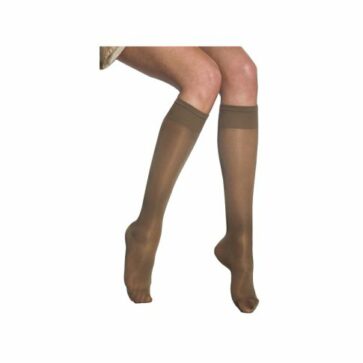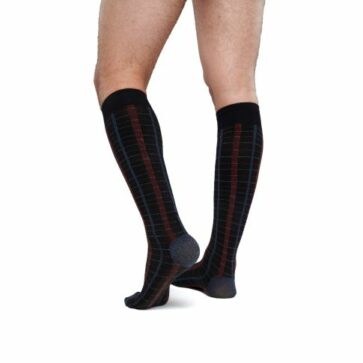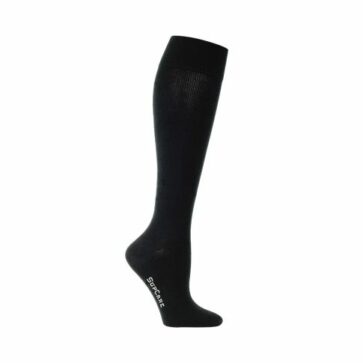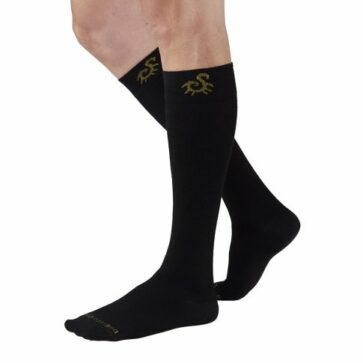Phlebitis – A Guide
In simple terms, phlebitis is when a blood clot blocks a vein close to the surface of your skin. Phlebitis causes pain and inflammation but is not as risky as deep vein thrombosis.
Our simple guide to the condition tells you everything you want to know about the symptoms of phlebitis, including how treatment for the condition can be helped by wearing compression hosiery.
For Phlebitis, Daylong recommends:
What is Phlebitis?
Phlebitis occurs when a blood clot blocks one of the veins that lie just beneath the surface of your skin. This causes pain, redness and swelling and frequently a lump.
Phlebitis can arise anywhere in your body, but it is most common in your legs, or anywhere you may have had an injection. Although painful, this condition is not as serious as deep vein thrombosis because blood clots in veins close to the surface of your skin rarely break off and travel to other parts of the body.
The symptoms of phlebitis include:
- Swelling around the clot as extra fluid builds up
- Inflammation, redness and pain
- General or intense aching in and around the phlebitis
- Increased temperature, giving you the symptoms of a fever
- As phlebitis reduces, you may still notice a lump which can remain sore
How to prevent Phlebitis
If you experience a lump in your skin that is red, hot and sore, you should see your GP. They will examine you and may send you for further tests. Phlebitis can develop into deep vein thrombosis, with the risk of the clot breaking off and travelling to the lungs, which can be life-threatening. Treatment for phlebitis includes:- Painkillers and anti-inflammatory preparations to rub into your skin
- Drugs that reduce the blood’s ability to clot
- Gently exercising, using a hot compress and resting with your leg raised
- Wearing compression hosiery, either support stockings or tights
- Compression hosiery will keep the blood flowing in your legs, and will also help reduce the swelling to make you feel more comfortable. When choosing compression stockings, it is important that you are fitted with the right type of compression hosiery with the right compression level. Our guide to compression will help.
What causes Phlebitis?
There are many different causes , the major causes are:- Problems with your circulation: People who have had deep vein thrombosis or varicose veins are also more at risk.
- A stay in hospital: Phlebitis can develop if you are in bed for extended periods. The reason being that immobilisation causes your blood to flow more slowly.
- Having drug treatment by injection: If you have been given drugs through a device that stays in place in your vein during your treatment, this can injure the vein. This in turn can lead to inflammation and phlebitis.
- Blood clotting problem: Although rare, these are usually genetic and can cause your blood to clot more easily.
- Damage to vein tissue: If you have an accident, fall or other traumatic incident, injury to a vein can cause it to be compressed, become blocked and more likely that a condition such as phlebitis develops.
Top tips to prevent Phlebitis
The best advice is to follow your treatment as directed by your GP until your symptoms ease. If phlebitis in your legs is connected with poor circulation, you can do the following to prevent it from happening again:- Exercise regularly
- Stop smoking
- Wear compression support stockings or support tights such as Venosan Supportline which help keep the blood flowing through your legs
- Rest with your leg raised so your ankle is higher up than your hip
- Make sure you control your weight.




